PAMM INAUGURATES AN EXHIBITION BY FELIPE MUJICA IN COLLABORATION WITH THE MICCOSUKEE TRIBE IN SOUTH FLORIDA
Felipe Mujica: The Swaying Motion on the Bank of the River Falls highlights the ecological and cultural diversity of South Florida in collaboration with the Miccosukee tribe. It features an installation of over 20 new fabric panels, or “curtains,” that spatially interact with the museum as well as function as visual, tactile and conceptual surfaces of inclusion, dialogue, specifically with the tradition of Patchwork of the Miccosukee Tribe. The project is the result of a years-long collaboration between the Chilean artist and Khadijah Cypress, a Miccosukee artisan.
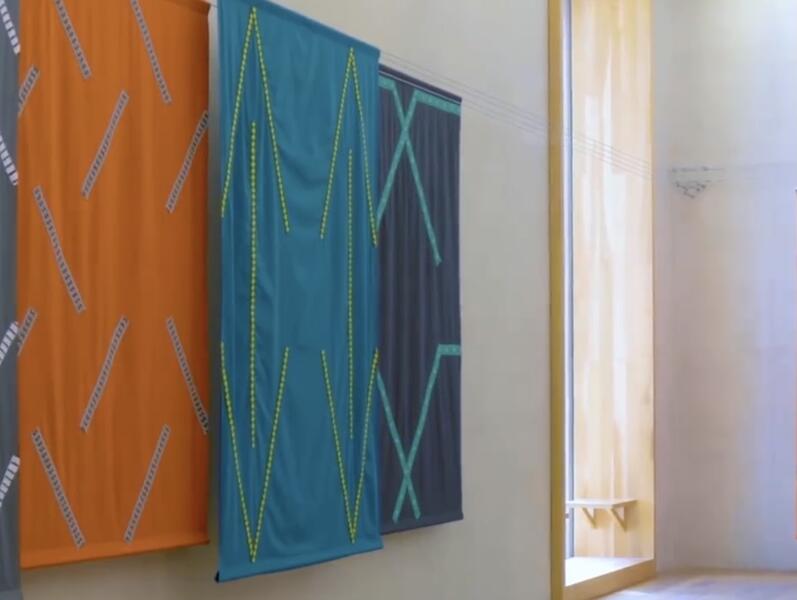
The works often serve as modifiable extensions to the space in which they are displayed; some of them are movable, redirecting the viewer’s passage through the exhibition and thus proposing a dynamic composition that is not determined in advance, but varies depending on the interaction with the work. The geometric designs on many of these curtains are inspired by themes close to the artist, or by the work of other artists belonging to the historical avant-gardes such as Alexander Rodchenko and Paul Klee.
Another fundamental aspect of his practice is to open up his art to dialogue with others through a socially engaged production. For example, in his project for the 32nd São Paulo Biennial, Mujica worked in partnership with Brazilian designers and embroiderers from a local community to employ their personal knowledge and techniques to produce the panels. In Mexico for the XIII Bienal FEMSA, Mujica worked in partnership with the Wixárikas artisans from Zacatecas to introduce their cultural knowledge and traditional beading method into his abstract designed panels.
-
Felipe Mujica. Pyramid, 2021 (detail). Cotton fabric and thread, 92 1/8 x 57 7/8 inches. Courtesy the artist. Photo: Luis Corzo
-
Felipe Mujica. Pyramid, 2021 (detail). Cotton fabric and thread, 92 1/8 x 57 7/8 inches. Courtesy the artist. Photo: Luis Corzo
-
Felipe Mujica. Steps, 2021 (detail). Cotton fabric and thread, 88 3/16 x 56 inches. Courtesy the artist. Photo: Luis Corzo
-
Felipe Mujica. Lightning, 2021. Cotton fabric and thread, 89 x 56 inches. Courtesy the artist. Photo: Luis Corzo
-
Felipe Mujica. Fire, 2021. Cotton fabric and thread, 88 3/16 x 56 inches. Courtesy the artist. Photo: Luis Corzo
-
Felipe Mujica. Ellos ya habían aprendido que todo lo que sueñan puede existir, 2018. XIII Bienal FEMSA, Zacatecas, Mexico
For this exhibition, the patchwork designs incorporated in traditional Miccosukee garments and decorations represent abstracted interpretations of the natural world in which the tribes are immersed, featuring motifs such as alligators, rain, river, wind, and even a man on horse—an iconic symbol of colonial power. By incorporating these abstracted yet traditional designs into this collaborative work, Mujica conveys his research on geometric abstraction and its history, as well as a sensitivity to a metaphysical exploration of the world.
While inside the gallery space, viewers will be surrounded with approximately 12-15 curtains bearing symbols and patterns of the outdoor world as seen through the Miccosukee eye. Additional curtains will be placed in outside areas of the museum that shall be visible from the gallery’s window. The exhibition space will also be used as a platform for Miccosukee artisans and community members to engage with the public through programming that will share important aspects of their culture and traditions—providing a space for audiences to reflect and educate themselves on Miami’s neighbors of today and some of the earliest inhabitants of Florida.
Go behind-the-scenes of "Felipe Mujica: The Swaying Motion on the Bank of the River Falls” with the artist, Miccosukee artisan Khadijah Cypress, and exhibition curator Jennifer Inacio, as they create the works for the show opening May 20. Get your tickets: https://t.co/75TWluWoow pic.twitter.com/cQL0BzmseZ
— Pérez Art Museum Miami (@pamm) May 18, 2021
Felipe Mujica (b. 1974, Santiago, Chile) studied art at the Universidad Católica de Chile. After art school he co-founded the artist-run space Galería Chilena, which operated from 1997 to 2005, first as a nomadic and commercial art gallery and later as a collaborative art project, a curatorial “experiment.” In early 2000 Mujica moved to New York City where he currently lives and works. Parallel and interrelated to his own work, Mujica has organized and produced numerous collaborative projects, including exhibitions and books. And he has exhibited in numerous world-famous galleries and institutions.
Felipe Mujica: The Swaying Motion on the Bank of the River Falls
May 20, 2021 —Spring 2022
Pérez Art Museum Miami
Related Topics
May interest you

For centuries, noon has been considered a most forbidding hour, the time when shadows shorten and specters emerge. Regarding this theme, the exhibition features seven large-scale works by internationally acclaimed artists Jennifer Allora and Guillermo Calzadilla, conceived during a four-year collaboration with the museum.
BETWEEN BEAUTY AND BEWILDERMENT, THE MENIL COLLECTION PRESENTS ALLORA & CALZADILLA: SPECTERS OF NOON
For centuries, noon has been considered a most forbidding hour, the time when shadows shorten and specters emerge. Regarding this theme, the exhibition features seven large-scale works by internationally acclaimed artists Jennifer Allora and Guillermo Calzadilla, conceived during a four-year collaboration with the museum.

For centuries, noon has been considered a most forbidding hour, the time when shadows shorten and specters emerge. Regarding this theme, the exhibition features seven large-scale works by internationally acclaimed artists Jennifer Allora and Guillermo Calzadilla, conceived during a four-year collaboration with the museum.
BETWEEN BEAUTY AND BEWILDERMENT, THE MENIL COLLECTION PRESENTS ALLORA & CALZADILLA: SPECTERS OF NOON
For centuries, noon has been considered a most forbidding hour, the time when shadows shorten and specters emerge. Regarding this theme, the exhibition features seven large-scale works by internationally acclaimed artists Jennifer Allora and Guillermo Calzadilla, conceived during a four-year collaboration with the museum.
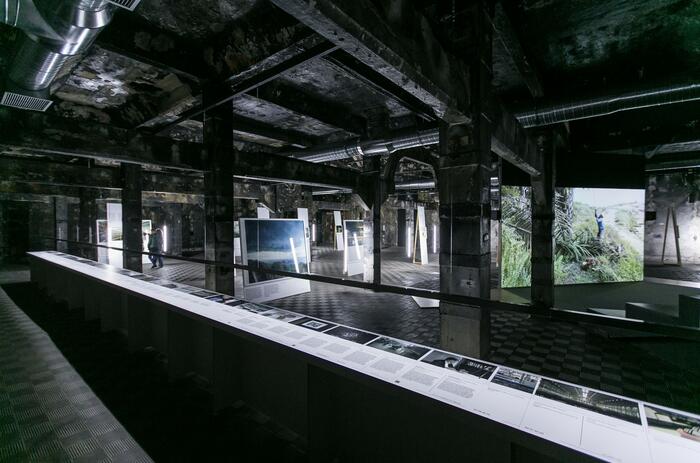
The exhibition at Matadero Madird is the result of ten years of work that the Italian artist Armin Linke (Milan, 1966) has developed in collaboration with Giulia Bruno and Giuseppe Ielasi with the aim of configuring a visual anthropology around political, economic and technological activity and the consequences that these processes have on the planetary ecosystems.
BLIND SENSORIUM: A VISUAL ANTHROPOLOGY THAT QUESTIONS CLIMATE ACTION
The exhibition at Matadero Madird is the result of ten years of work that the Italian artist Armin Linke (Milan, 1966) has developed in collaboration with Giulia Bruno and Giuseppe Ielasi with the aim of configuring a visual anthropology around political, economic and technological activity and the consequences that these processes have on the planetary ecosystems.

American architect Terence Riley has passed away at the age of 66. He was a founding partner of Keenen/Riley Architects and held numerous high-profile positions at well-renowned museums and institutions. He is most remembered by his innovation and strong commitment to the arts.
IN MEMORIAM. TERENCE RILEY
American architect Terence Riley has passed away at the age of 66. He was a founding partner of Keenen/Riley Architects and held numerous high-profile positions at well-renowned museums and institutions. He is most remembered by his innovation and strong commitment to the arts.
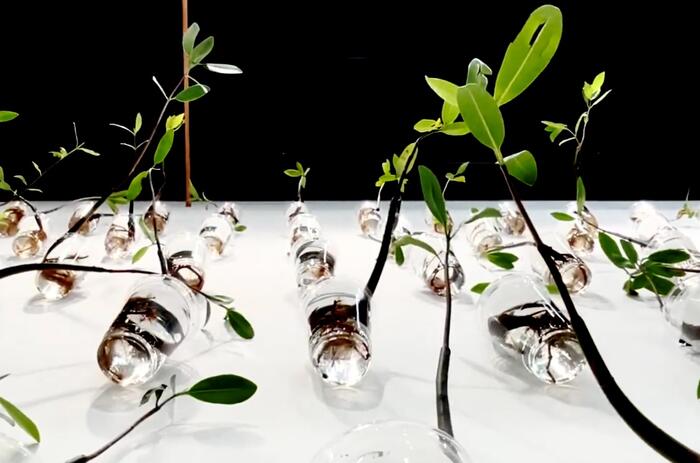
When Cortada first witnessed a violent uprooting of mangrove forests in the Florida Keys in 2006, he became motivated to take action and protect these native habitats. He launched the Reclamation Project on Earth Day 2006 at the Bass Museum. This year, Cortada’s solo exhibit, “The Reclamation Project: Engaging Community For 15 Years Through Participatory Eco-art,” honored the quindecennial of his participatory eco-art project at the University of Miami Wynwood Gallery.
15 YEARS OF XAVIER CORTADAS’S ECOLOGICAL ART ACTIVATIONS
When Cortada first witnessed a violent uprooting of mangrove forests in the Florida Keys in 2006, he became motivated to take action and protect these native habitats. He launched the Reclamation Project on Earth Day 2006 at the Bass Museum. This year, Cortada’s solo exhibit, “The Reclamation Project: Engaging Community For 15 Years Through Participatory Eco-art,” honored the quindecennial of his participatory eco-art project at the University of Miami Wynwood Gallery.
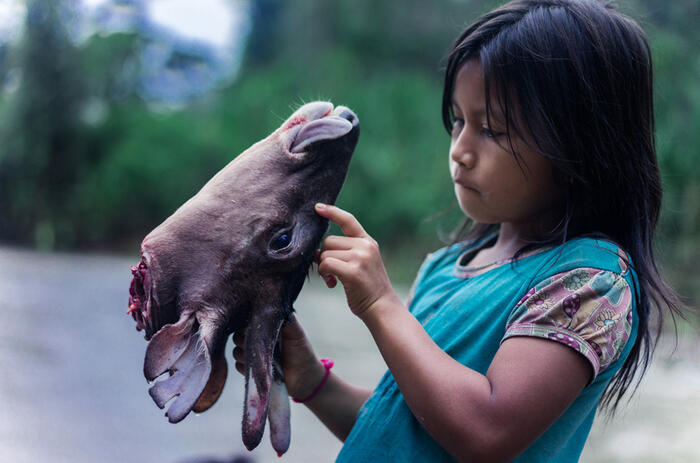
Collaborating to energize the local market, the galleries + Arte and Talō (both Ecuadorian) present parte de mí / aparte de mí (part of me / apart from me) by the artists Karen Miranda Rivadeneira and Misha Vallejo Prut. Exhibited at Talō and curated by Gabriela Moyano (+ Arte), the show will be open until July 26.
+ ARTE AND TALŌ OFFER A NEW APPROACH TO ECUADORIAN INDIGENOUS COMMUNITIES
Collaborating to energize the local market, the galleries + Arte and Talō (both Ecuadorian) present parte de mí / aparte de mí (part of me / apart from me) by the artists Karen Miranda Rivadeneira and Misha Vallejo Prut. Exhibited at Talō and curated by Gabriela Moyano (+ Arte), the show will be open until July 26.

The artista exhibits Pa tu run ché (From the treetop) in Proyectos Ultravioleta, Guatemala City.
EDGAR CALEL QUESTIONS THE FETICHISMS AROUND INDIGENEITY
The artista exhibits Pa tu run ché (From the treetop) in Proyectos Ultravioleta, Guatemala City.
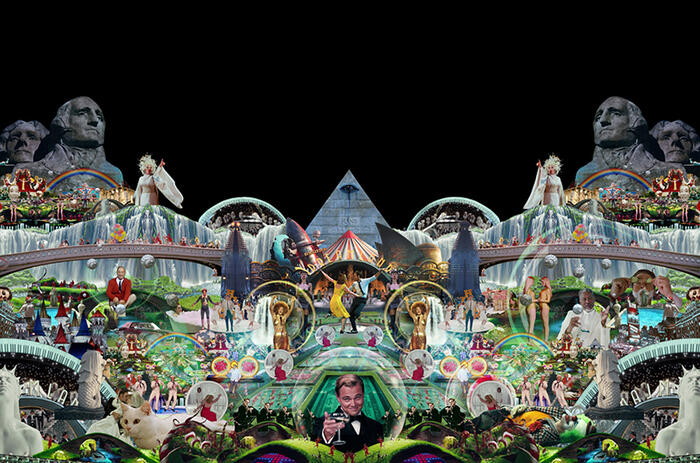
A lavish, satirical and vertigo-inducing meditation on the Hollywood ‘Dream Factory,’ Heaven’s Gate is a work of digital psychedelia employing the same state-of-the-art computer compositing technology as the films it references. On view at the Pérez Art Museum Miami until early 2022.
HEAVEN’S GATE - MARCO BRAMBILLA’S EXHIBITION AT PAMM
A lavish, satirical and vertigo-inducing meditation on the Hollywood ‘Dream Factory,’ Heaven’s Gate is a work of digital psychedelia employing the same state-of-the-art computer compositing technology as the films it references. On view at the Pérez Art Museum Miami until early 2022.
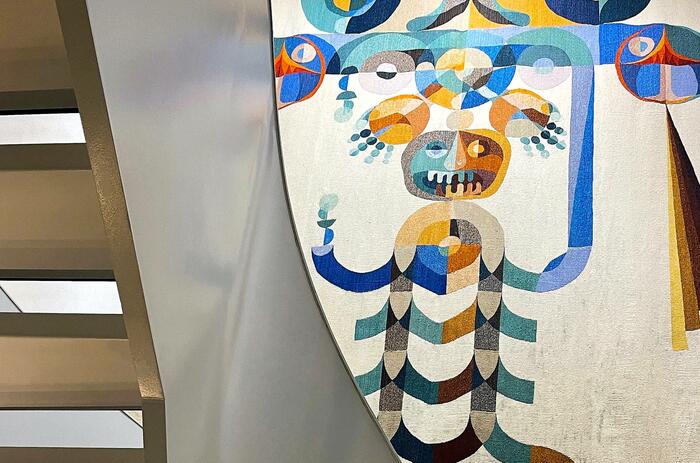
Geneva-based gallery Espace Muraille presents Eamon Ore-Giron: Auto-Tune, the first-ever show of the Los Angeles-based artist in continental Europe. Curated by Valentina Locatelli and developed in close collaboration with the artist, the exhibition gathers eighteen paintings from his ongoing series Infinite Regress, conceived especially for the exhibition in Geneva, and two loom-woven tapestries created in collaboration with the Taller Mexicano de Gobelinos in Guadalajara, Mexico
ON THE MEANING OF INTERSECTION – EAMON ORE-GIRON’S EXHIBITION IN GENEVA
Geneva-based gallery Espace Muraille presents Eamon Ore-Giron: Auto-Tune, the first-ever show of the Los Angeles-based artist in continental Europe. Curated by Valentina Locatelli and developed in close collaboration with the artist, the exhibition gathers eighteen paintings from his ongoing series Infinite Regress, conceived especially for the exhibition in Geneva, and two loom-woven tapestries created in collaboration with the Taller Mexicano de Gobelinos in Guadalajara, Mexico
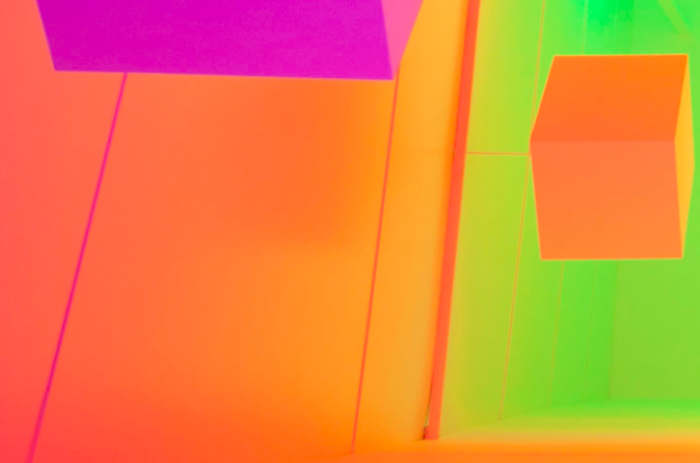
Acquired for PAMM’s collection in 2020 with funds provided by Jorge M. Pérez, Chromosaturation is an immersive environment that reimagines color as an embodied experience.
CARLOS CRUZ-DIEZ: CHROMOSATURATION AT PAMM
Acquired for PAMM’s collection in 2020 with funds provided by Jorge M. Pérez, Chromosaturation is an immersive environment that reimagines color as an embodied experience.

For centuries, noon has been considered a most forbidding hour, the time when shadows shorten and specters emerge. Regarding this theme, the exhibition features seven large-scale works by internationally acclaimed artists Jennifer Allora and Guillermo Calzadilla, conceived during a four-year collaboration with the museum.
BETWEEN BEAUTY AND BEWILDERMENT, THE MENIL COLLECTION PRESENTS ALLORA & CALZADILLA: SPECTERS OF NOON
For centuries, noon has been considered a most forbidding hour, the time when shadows shorten and specters emerge. Regarding this theme, the exhibition features seven large-scale works by internationally acclaimed artists Jennifer Allora and Guillermo Calzadilla, conceived during a four-year collaboration with the museum.

The exhibition at Matadero Madird is the result of ten years of work that the Italian artist Armin Linke (Milan, 1966) has developed in collaboration with Giulia Bruno and Giuseppe Ielasi with the aim of configuring a visual anthropology around political, economic and technological activity and the consequences that these processes have on the planetary ecosystems.
BLIND SENSORIUM: A VISUAL ANTHROPOLOGY THAT QUESTIONS CLIMATE ACTION
The exhibition at Matadero Madird is the result of ten years of work that the Italian artist Armin Linke (Milan, 1966) has developed in collaboration with Giulia Bruno and Giuseppe Ielasi with the aim of configuring a visual anthropology around political, economic and technological activity and the consequences that these processes have on the planetary ecosystems.

American architect Terence Riley has passed away at the age of 66. He was a founding partner of Keenen/Riley Architects and held numerous high-profile positions at well-renowned museums and institutions. He is most remembered by his innovation and strong commitment to the arts.
IN MEMORIAM. TERENCE RILEY
American architect Terence Riley has passed away at the age of 66. He was a founding partner of Keenen/Riley Architects and held numerous high-profile positions at well-renowned museums and institutions. He is most remembered by his innovation and strong commitment to the arts.

When Cortada first witnessed a violent uprooting of mangrove forests in the Florida Keys in 2006, he became motivated to take action and protect these native habitats. He launched the Reclamation Project on Earth Day 2006 at the Bass Museum. This year, Cortada’s solo exhibit, “The Reclamation Project: Engaging Community For 15 Years Through Participatory Eco-art,” honored the quindecennial of his participatory eco-art project at the University of Miami Wynwood Gallery.
15 YEARS OF XAVIER CORTADAS’S ECOLOGICAL ART ACTIVATIONS
When Cortada first witnessed a violent uprooting of mangrove forests in the Florida Keys in 2006, he became motivated to take action and protect these native habitats. He launched the Reclamation Project on Earth Day 2006 at the Bass Museum. This year, Cortada’s solo exhibit, “The Reclamation Project: Engaging Community For 15 Years Through Participatory Eco-art,” honored the quindecennial of his participatory eco-art project at the University of Miami Wynwood Gallery.

Collaborating to energize the local market, the galleries + Arte and Talō (both Ecuadorian) present parte de mí / aparte de mí (part of me / apart from me) by the artists Karen Miranda Rivadeneira and Misha Vallejo Prut. Exhibited at Talō and curated by Gabriela Moyano (+ Arte), the show will be open until July 26.
+ ARTE AND TALŌ OFFER A NEW APPROACH TO ECUADORIAN INDIGENOUS COMMUNITIES
Collaborating to energize the local market, the galleries + Arte and Talō (both Ecuadorian) present parte de mí / aparte de mí (part of me / apart from me) by the artists Karen Miranda Rivadeneira and Misha Vallejo Prut. Exhibited at Talō and curated by Gabriela Moyano (+ Arte), the show will be open until July 26.

The artista exhibits Pa tu run ché (From the treetop) in Proyectos Ultravioleta, Guatemala City.
EDGAR CALEL QUESTIONS THE FETICHISMS AROUND INDIGENEITY
The artista exhibits Pa tu run ché (From the treetop) in Proyectos Ultravioleta, Guatemala City.

A lavish, satirical and vertigo-inducing meditation on the Hollywood ‘Dream Factory,’ Heaven’s Gate is a work of digital psychedelia employing the same state-of-the-art computer compositing technology as the films it references. On view at the Pérez Art Museum Miami until early 2022.
HEAVEN’S GATE - MARCO BRAMBILLA’S EXHIBITION AT PAMM
A lavish, satirical and vertigo-inducing meditation on the Hollywood ‘Dream Factory,’ Heaven’s Gate is a work of digital psychedelia employing the same state-of-the-art computer compositing technology as the films it references. On view at the Pérez Art Museum Miami until early 2022.

Geneva-based gallery Espace Muraille presents Eamon Ore-Giron: Auto-Tune, the first-ever show of the Los Angeles-based artist in continental Europe. Curated by Valentina Locatelli and developed in close collaboration with the artist, the exhibition gathers eighteen paintings from his ongoing series Infinite Regress, conceived especially for the exhibition in Geneva, and two loom-woven tapestries created in collaboration with the Taller Mexicano de Gobelinos in Guadalajara, Mexico
ON THE MEANING OF INTERSECTION – EAMON ORE-GIRON’S EXHIBITION IN GENEVA
Geneva-based gallery Espace Muraille presents Eamon Ore-Giron: Auto-Tune, the first-ever show of the Los Angeles-based artist in continental Europe. Curated by Valentina Locatelli and developed in close collaboration with the artist, the exhibition gathers eighteen paintings from his ongoing series Infinite Regress, conceived especially for the exhibition in Geneva, and two loom-woven tapestries created in collaboration with the Taller Mexicano de Gobelinos in Guadalajara, Mexico

Acquired for PAMM’s collection in 2020 with funds provided by Jorge M. Pérez, Chromosaturation is an immersive environment that reimagines color as an embodied experience.
CARLOS CRUZ-DIEZ: CHROMOSATURATION AT PAMM
Acquired for PAMM’s collection in 2020 with funds provided by Jorge M. Pérez, Chromosaturation is an immersive environment that reimagines color as an embodied experience.

For centuries, noon has been considered a most forbidding hour, the time when shadows shorten and specters emerge. Regarding this theme, the exhibition features seven large-scale works by internationally acclaimed artists Jennifer Allora and Guillermo Calzadilla, conceived during a four-year collaboration with the museum.
BETWEEN BEAUTY AND BEWILDERMENT, THE MENIL COLLECTION PRESENTS ALLORA & CALZADILLA: SPECTERS OF NOON
For centuries, noon has been considered a most forbidding hour, the time when shadows shorten and specters emerge. Regarding this theme, the exhibition features seven large-scale works by internationally acclaimed artists Jennifer Allora and Guillermo Calzadilla, conceived during a four-year collaboration with the museum.

The exhibition at Matadero Madird is the result of ten years of work that the Italian artist Armin Linke (Milan, 1966) has developed in collaboration with Giulia Bruno and Giuseppe Ielasi with the aim of configuring a visual anthropology around political, economic and technological activity and the consequences that these processes have on the planetary ecosystems.
BLIND SENSORIUM: A VISUAL ANTHROPOLOGY THAT QUESTIONS CLIMATE ACTION
The exhibition at Matadero Madird is the result of ten years of work that the Italian artist Armin Linke (Milan, 1966) has developed in collaboration with Giulia Bruno and Giuseppe Ielasi with the aim of configuring a visual anthropology around political, economic and technological activity and the consequences that these processes have on the planetary ecosystems.

American architect Terence Riley has passed away at the age of 66. He was a founding partner of Keenen/Riley Architects and held numerous high-profile positions at well-renowned museums and institutions. He is most remembered by his innovation and strong commitment to the arts.
IN MEMORIAM. TERENCE RILEY
American architect Terence Riley has passed away at the age of 66. He was a founding partner of Keenen/Riley Architects and held numerous high-profile positions at well-renowned museums and institutions. He is most remembered by his innovation and strong commitment to the arts.

When Cortada first witnessed a violent uprooting of mangrove forests in the Florida Keys in 2006, he became motivated to take action and protect these native habitats. He launched the Reclamation Project on Earth Day 2006 at the Bass Museum. This year, Cortada’s solo exhibit, “The Reclamation Project: Engaging Community For 15 Years Through Participatory Eco-art,” honored the quindecennial of his participatory eco-art project at the University of Miami Wynwood Gallery.
15 YEARS OF XAVIER CORTADAS’S ECOLOGICAL ART ACTIVATIONS
When Cortada first witnessed a violent uprooting of mangrove forests in the Florida Keys in 2006, he became motivated to take action and protect these native habitats. He launched the Reclamation Project on Earth Day 2006 at the Bass Museum. This year, Cortada’s solo exhibit, “The Reclamation Project: Engaging Community For 15 Years Through Participatory Eco-art,” honored the quindecennial of his participatory eco-art project at the University of Miami Wynwood Gallery.

Collaborating to energize the local market, the galleries + Arte and Talō (both Ecuadorian) present parte de mí / aparte de mí (part of me / apart from me) by the artists Karen Miranda Rivadeneira and Misha Vallejo Prut. Exhibited at Talō and curated by Gabriela Moyano (+ Arte), the show will be open until July 26.
+ ARTE AND TALŌ OFFER A NEW APPROACH TO ECUADORIAN INDIGENOUS COMMUNITIES
Collaborating to energize the local market, the galleries + Arte and Talō (both Ecuadorian) present parte de mí / aparte de mí (part of me / apart from me) by the artists Karen Miranda Rivadeneira and Misha Vallejo Prut. Exhibited at Talō and curated by Gabriela Moyano (+ Arte), the show will be open until July 26.

The artista exhibits Pa tu run ché (From the treetop) in Proyectos Ultravioleta, Guatemala City.
EDGAR CALEL QUESTIONS THE FETICHISMS AROUND INDIGENEITY
The artista exhibits Pa tu run ché (From the treetop) in Proyectos Ultravioleta, Guatemala City.

A lavish, satirical and vertigo-inducing meditation on the Hollywood ‘Dream Factory,’ Heaven’s Gate is a work of digital psychedelia employing the same state-of-the-art computer compositing technology as the films it references. On view at the Pérez Art Museum Miami until early 2022.
HEAVEN’S GATE - MARCO BRAMBILLA’S EXHIBITION AT PAMM
A lavish, satirical and vertigo-inducing meditation on the Hollywood ‘Dream Factory,’ Heaven’s Gate is a work of digital psychedelia employing the same state-of-the-art computer compositing technology as the films it references. On view at the Pérez Art Museum Miami until early 2022.

Geneva-based gallery Espace Muraille presents Eamon Ore-Giron: Auto-Tune, the first-ever show of the Los Angeles-based artist in continental Europe. Curated by Valentina Locatelli and developed in close collaboration with the artist, the exhibition gathers eighteen paintings from his ongoing series Infinite Regress, conceived especially for the exhibition in Geneva, and two loom-woven tapestries created in collaboration with the Taller Mexicano de Gobelinos in Guadalajara, Mexico
ON THE MEANING OF INTERSECTION – EAMON ORE-GIRON’S EXHIBITION IN GENEVA
Geneva-based gallery Espace Muraille presents Eamon Ore-Giron: Auto-Tune, the first-ever show of the Los Angeles-based artist in continental Europe. Curated by Valentina Locatelli and developed in close collaboration with the artist, the exhibition gathers eighteen paintings from his ongoing series Infinite Regress, conceived especially for the exhibition in Geneva, and two loom-woven tapestries created in collaboration with the Taller Mexicano de Gobelinos in Guadalajara, Mexico

Acquired for PAMM’s collection in 2020 with funds provided by Jorge M. Pérez, Chromosaturation is an immersive environment that reimagines color as an embodied experience.
CARLOS CRUZ-DIEZ: CHROMOSATURATION AT PAMM
Acquired for PAMM’s collection in 2020 with funds provided by Jorge M. Pérez, Chromosaturation is an immersive environment that reimagines color as an embodied experience.

For centuries, noon has been considered a most forbidding hour, the time when shadows shorten and specters emerge. Regarding this theme, the exhibition features seven large-scale works by internationally acclaimed artists Jennifer Allora and Guillermo Calzadilla, conceived during a four-year collaboration with the museum.
BETWEEN BEAUTY AND BEWILDERMENT, THE MENIL COLLECTION PRESENTS ALLORA & CALZADILLA: SPECTERS OF NOON
For centuries, noon has been considered a most forbidding hour, the time when shadows shorten and specters emerge. Regarding this theme, the exhibition features seven large-scale works by internationally acclaimed artists Jennifer Allora and Guillermo Calzadilla, conceived during a four-year collaboration with the museum.

The exhibition at Matadero Madird is the result of ten years of work that the Italian artist Armin Linke (Milan, 1966) has developed in collaboration with Giulia Bruno and Giuseppe Ielasi with the aim of configuring a visual anthropology around political, economic and technological activity and the consequences that these processes have on the planetary ecosystems.
BLIND SENSORIUM: A VISUAL ANTHROPOLOGY THAT QUESTIONS CLIMATE ACTION
The exhibition at Matadero Madird is the result of ten years of work that the Italian artist Armin Linke (Milan, 1966) has developed in collaboration with Giulia Bruno and Giuseppe Ielasi with the aim of configuring a visual anthropology around political, economic and technological activity and the consequences that these processes have on the planetary ecosystems.

American architect Terence Riley has passed away at the age of 66. He was a founding partner of Keenen/Riley Architects and held numerous high-profile positions at well-renowned museums and institutions. He is most remembered by his innovation and strong commitment to the arts.
IN MEMORIAM. TERENCE RILEY
American architect Terence Riley has passed away at the age of 66. He was a founding partner of Keenen/Riley Architects and held numerous high-profile positions at well-renowned museums and institutions. He is most remembered by his innovation and strong commitment to the arts.

When Cortada first witnessed a violent uprooting of mangrove forests in the Florida Keys in 2006, he became motivated to take action and protect these native habitats. He launched the Reclamation Project on Earth Day 2006 at the Bass Museum. This year, Cortada’s solo exhibit, “The Reclamation Project: Engaging Community For 15 Years Through Participatory Eco-art,” honored the quindecennial of his participatory eco-art project at the University of Miami Wynwood Gallery.
15 YEARS OF XAVIER CORTADAS’S ECOLOGICAL ART ACTIVATIONS
When Cortada first witnessed a violent uprooting of mangrove forests in the Florida Keys in 2006, he became motivated to take action and protect these native habitats. He launched the Reclamation Project on Earth Day 2006 at the Bass Museum. This year, Cortada’s solo exhibit, “The Reclamation Project: Engaging Community For 15 Years Through Participatory Eco-art,” honored the quindecennial of his participatory eco-art project at the University of Miami Wynwood Gallery.

Collaborating to energize the local market, the galleries + Arte and Talō (both Ecuadorian) present parte de mí / aparte de mí (part of me / apart from me) by the artists Karen Miranda Rivadeneira and Misha Vallejo Prut. Exhibited at Talō and curated by Gabriela Moyano (+ Arte), the show will be open until July 26.
+ ARTE AND TALŌ OFFER A NEW APPROACH TO ECUADORIAN INDIGENOUS COMMUNITIES
Collaborating to energize the local market, the galleries + Arte and Talō (both Ecuadorian) present parte de mí / aparte de mí (part of me / apart from me) by the artists Karen Miranda Rivadeneira and Misha Vallejo Prut. Exhibited at Talō and curated by Gabriela Moyano (+ Arte), the show will be open until July 26.

The artista exhibits Pa tu run ché (From the treetop) in Proyectos Ultravioleta, Guatemala City.
EDGAR CALEL QUESTIONS THE FETICHISMS AROUND INDIGENEITY
The artista exhibits Pa tu run ché (From the treetop) in Proyectos Ultravioleta, Guatemala City.

A lavish, satirical and vertigo-inducing meditation on the Hollywood ‘Dream Factory,’ Heaven’s Gate is a work of digital psychedelia employing the same state-of-the-art computer compositing technology as the films it references. On view at the Pérez Art Museum Miami until early 2022.
HEAVEN’S GATE - MARCO BRAMBILLA’S EXHIBITION AT PAMM
A lavish, satirical and vertigo-inducing meditation on the Hollywood ‘Dream Factory,’ Heaven’s Gate is a work of digital psychedelia employing the same state-of-the-art computer compositing technology as the films it references. On view at the Pérez Art Museum Miami until early 2022.

Geneva-based gallery Espace Muraille presents Eamon Ore-Giron: Auto-Tune, the first-ever show of the Los Angeles-based artist in continental Europe. Curated by Valentina Locatelli and developed in close collaboration with the artist, the exhibition gathers eighteen paintings from his ongoing series Infinite Regress, conceived especially for the exhibition in Geneva, and two loom-woven tapestries created in collaboration with the Taller Mexicano de Gobelinos in Guadalajara, Mexico
ON THE MEANING OF INTERSECTION – EAMON ORE-GIRON’S EXHIBITION IN GENEVA
Geneva-based gallery Espace Muraille presents Eamon Ore-Giron: Auto-Tune, the first-ever show of the Los Angeles-based artist in continental Europe. Curated by Valentina Locatelli and developed in close collaboration with the artist, the exhibition gathers eighteen paintings from his ongoing series Infinite Regress, conceived especially for the exhibition in Geneva, and two loom-woven tapestries created in collaboration with the Taller Mexicano de Gobelinos in Guadalajara, Mexico

Acquired for PAMM’s collection in 2020 with funds provided by Jorge M. Pérez, Chromosaturation is an immersive environment that reimagines color as an embodied experience.
CARLOS CRUZ-DIEZ: CHROMOSATURATION AT PAMM
Acquired for PAMM’s collection in 2020 with funds provided by Jorge M. Pérez, Chromosaturation is an immersive environment that reimagines color as an embodied experience.

For centuries, noon has been considered a most forbidding hour, the time when shadows shorten and specters emerge. Regarding this theme, the exhibition features seven large-scale works by internationally acclaimed artists Jennifer Allora and Guillermo Calzadilla, conceived during a four-year collaboration with the museum.
BETWEEN BEAUTY AND BEWILDERMENT, THE MENIL COLLECTION PRESENTS ALLORA & CALZADILLA: SPECTERS OF NOON
For centuries, noon has been considered a most forbidding hour, the time when shadows shorten and specters emerge. Regarding this theme, the exhibition features seven large-scale works by internationally acclaimed artists Jennifer Allora and Guillermo Calzadilla, conceived during a four-year collaboration with the museum.

The exhibition at Matadero Madird is the result of ten years of work that the Italian artist Armin Linke (Milan, 1966) has developed in collaboration with Giulia Bruno and Giuseppe Ielasi with the aim of configuring a visual anthropology around political, economic and technological activity and the consequences that these processes have on the planetary ecosystems.
BLIND SENSORIUM: A VISUAL ANTHROPOLOGY THAT QUESTIONS CLIMATE ACTION
The exhibition at Matadero Madird is the result of ten years of work that the Italian artist Armin Linke (Milan, 1966) has developed in collaboration with Giulia Bruno and Giuseppe Ielasi with the aim of configuring a visual anthropology around political, economic and technological activity and the consequences that these processes have on the planetary ecosystems.

American architect Terence Riley has passed away at the age of 66. He was a founding partner of Keenen/Riley Architects and held numerous high-profile positions at well-renowned museums and institutions. He is most remembered by his innovation and strong commitment to the arts.
IN MEMORIAM. TERENCE RILEY
American architect Terence Riley has passed away at the age of 66. He was a founding partner of Keenen/Riley Architects and held numerous high-profile positions at well-renowned museums and institutions. He is most remembered by his innovation and strong commitment to the arts.

When Cortada first witnessed a violent uprooting of mangrove forests in the Florida Keys in 2006, he became motivated to take action and protect these native habitats. He launched the Reclamation Project on Earth Day 2006 at the Bass Museum. This year, Cortada’s solo exhibit, “The Reclamation Project: Engaging Community For 15 Years Through Participatory Eco-art,” honored the quindecennial of his participatory eco-art project at the University of Miami Wynwood Gallery.
15 YEARS OF XAVIER CORTADAS’S ECOLOGICAL ART ACTIVATIONS
When Cortada first witnessed a violent uprooting of mangrove forests in the Florida Keys in 2006, he became motivated to take action and protect these native habitats. He launched the Reclamation Project on Earth Day 2006 at the Bass Museum. This year, Cortada’s solo exhibit, “The Reclamation Project: Engaging Community For 15 Years Through Participatory Eco-art,” honored the quindecennial of his participatory eco-art project at the University of Miami Wynwood Gallery.

Collaborating to energize the local market, the galleries + Arte and Talō (both Ecuadorian) present parte de mí / aparte de mí (part of me / apart from me) by the artists Karen Miranda Rivadeneira and Misha Vallejo Prut. Exhibited at Talō and curated by Gabriela Moyano (+ Arte), the show will be open until July 26.
+ ARTE AND TALŌ OFFER A NEW APPROACH TO ECUADORIAN INDIGENOUS COMMUNITIES
Collaborating to energize the local market, the galleries + Arte and Talō (both Ecuadorian) present parte de mí / aparte de mí (part of me / apart from me) by the artists Karen Miranda Rivadeneira and Misha Vallejo Prut. Exhibited at Talō and curated by Gabriela Moyano (+ Arte), the show will be open until July 26.

The artista exhibits Pa tu run ché (From the treetop) in Proyectos Ultravioleta, Guatemala City.
EDGAR CALEL QUESTIONS THE FETICHISMS AROUND INDIGENEITY
The artista exhibits Pa tu run ché (From the treetop) in Proyectos Ultravioleta, Guatemala City.

A lavish, satirical and vertigo-inducing meditation on the Hollywood ‘Dream Factory,’ Heaven’s Gate is a work of digital psychedelia employing the same state-of-the-art computer compositing technology as the films it references. On view at the Pérez Art Museum Miami until early 2022.
HEAVEN’S GATE - MARCO BRAMBILLA’S EXHIBITION AT PAMM
A lavish, satirical and vertigo-inducing meditation on the Hollywood ‘Dream Factory,’ Heaven’s Gate is a work of digital psychedelia employing the same state-of-the-art computer compositing technology as the films it references. On view at the Pérez Art Museum Miami until early 2022.

Geneva-based gallery Espace Muraille presents Eamon Ore-Giron: Auto-Tune, the first-ever show of the Los Angeles-based artist in continental Europe. Curated by Valentina Locatelli and developed in close collaboration with the artist, the exhibition gathers eighteen paintings from his ongoing series Infinite Regress, conceived especially for the exhibition in Geneva, and two loom-woven tapestries created in collaboration with the Taller Mexicano de Gobelinos in Guadalajara, Mexico
ON THE MEANING OF INTERSECTION – EAMON ORE-GIRON’S EXHIBITION IN GENEVA
Geneva-based gallery Espace Muraille presents Eamon Ore-Giron: Auto-Tune, the first-ever show of the Los Angeles-based artist in continental Europe. Curated by Valentina Locatelli and developed in close collaboration with the artist, the exhibition gathers eighteen paintings from his ongoing series Infinite Regress, conceived especially for the exhibition in Geneva, and two loom-woven tapestries created in collaboration with the Taller Mexicano de Gobelinos in Guadalajara, Mexico

Acquired for PAMM’s collection in 2020 with funds provided by Jorge M. Pérez, Chromosaturation is an immersive environment that reimagines color as an embodied experience.
CARLOS CRUZ-DIEZ: CHROMOSATURATION AT PAMM
Acquired for PAMM’s collection in 2020 with funds provided by Jorge M. Pérez, Chromosaturation is an immersive environment that reimagines color as an embodied experience.




